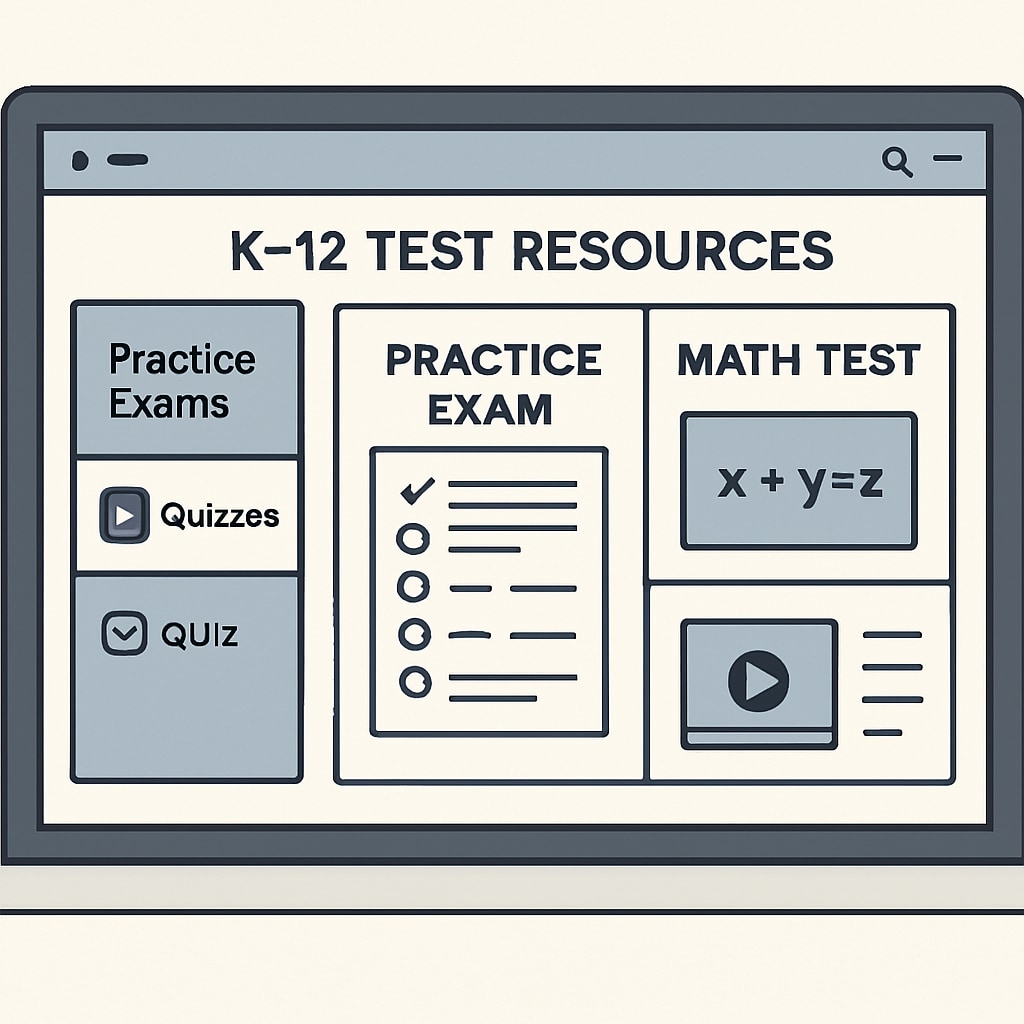High-quality test resources are more than just tools for evaluation; they are powerful teaching instruments capable of transforming the way K12 students learn. By leveraging these resources effectively, educators and parents can ensure that assessments go beyond rote memorization, fostering critical thinking, personalized learning, and long-term student growth. In this article, we will explore how to identify, access, and utilize these resources to make testing a positive force in education.

Recognizing the Value of High-Quality Test Resources
To understand the impact of high-quality test resources, it’s important to view assessments not as mere end-of-unit evaluations but as opportunities for active learning. Tests designed with clear objectives and aligned with curriculum standards can reinforce concepts, highlight areas for improvement, and encourage students to engage more deeply with the material.
For example, interactive quizzes and scenario-based questions help students apply knowledge in real-world contexts. Additionally, adaptive assessments tailor difficulty levels to individual learners, ensuring that each student is challenged appropriately. Britannica’s guide to educational assessments explains how these tools can support diverse learning needs.
How to Find Reliable Test Resources
Finding trustworthy test resources can be challenging, given the abundance of options available online. Here are some strategies to ensure quality:
- Reputable Platforms: Seek resources from well-known educational organizations such as Khan Academy, which offers free, high-quality test materials.
- Curriculum Alignment: Ensure that the materials align with your local or national curriculum standards to maintain relevance.
- User Reviews: Check educator and parent reviews to determine the effectiveness and usability of the resources.
- Trial Use: Test the resources yourself or with a small group of students before adopting them widely.
By following these steps, educators and parents can ensure they are selecting materials that truly benefit student learning.

Maximizing the Impact of Test Resources in the Classroom
Once high-quality test resources are identified, their effectiveness depends on how they are integrated into teaching strategies. Here are some tips:
- Feedback-Driven Learning: Use test results to provide constructive feedback, helping students understand their strengths and areas for improvement.
- Blended Learning: Combine traditional assessments with interactive tools like game-based quizzes to maintain student engagement.
- Collaborative Testing: Encourage group discussions around test questions to promote peer learning and critical thinking.
- Continuous Assessment: Implement formative assessments regularly to monitor progress and adjust teaching methods.
Transforming Assessment Mindsets
One of the biggest challenges in utilizing test resources effectively is overcoming the negative perception of testing as a stressful or punitive experience. Parents and educators can work together to create a positive testing environment by emphasizing growth and learning rather than grades. For example:
- Help students set personal goals for improvement rather than focusing solely on scores.
- Recognize and celebrate small achievements to build confidence.
- Encourage a growth mindset, where mistakes are viewed as learning opportunities.
When students view tests as tools for growth, they are more likely to approach assessments with curiosity and motivation.
In conclusion, high-quality test resources have the potential to reshape K12 education. By thoughtfully selecting, integrating, and reframing their purpose, we can turn assessments into valuable teaching tools that drive deeper learning and student success.
Readability guidance: The article uses clear headings, concise paragraphs, and actionable tips to ensure readability. Lists provide easy-to-follow strategies, while external links offer further insights.


